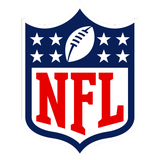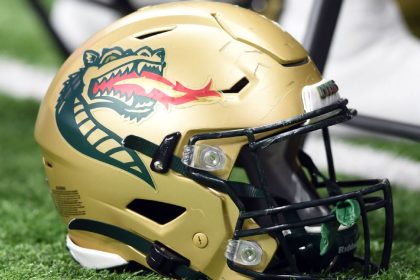With training camp less than a month away, NFL fans eagerly await the announcement of which team will be featured on NFL Films’ popular docuseries “Hard Knocks.” The Jets, with Aaron Rodgers entering his first season with New York, are expected to be the pick from an eligible group that also includes the Bears, Saints and Commanders.
The award-winning series chronicles the ups and downs of an NFL training camp through the eyes of players, coaches and executives. The inside access takes fans behind the curtain, leaving even casual NFL observers wanting more when each series is done.
As a former player and scout, the annual release of the series reminds me of my journey and the twists and turns I navigated over a 12-year career in the league. Although I have never been a part of a team that was featured in the series, I understand the intrigue but also the reluctance to invite cameras into the building.
When a team opens its doors to the NFL Films crew, it exposes the inner workings of its team-building processes and the leadership skills of its coaches and executives. While those insights and perspectives make for great TV, the exposure could ruin the chemistry and connectivity of the team if the structure, organization and authenticity of the franchise are not up to par.
ADVERTISEMENT
Moreover, the insights and conversations that come to light in the show could challenge the head coach’s ability to keep the team together when the players can watch the show.
Given the risks associated with opening the doors and letting the cameras in, it is easy to see why some teams, including the Jets, hoped to avoid the spotlight this season. After checking in with a few executives and coaches on the challenges of going through a training camp with cameras rolling 24/7, here are my thoughts:
Private messages become splashy headlines
Granting all access to NFL Films’ camera crews during training camp provides fans with the most intimate part of the team-building process. Training camps are an essential part of the team-building journey, with coaches utilizing the time to establish the team’s culture through an intensive six-week journey.
While training camps are drastically different in this era with the elimination of two-a-days and the grueling padded practices that were designed to test the courage and toughness of each player, the new-and-improved camps feature more meetings, film sessions and orchestrated team-bonding activities that help the team develop the chemistry and connectivity needed to play winning football.
With the cameras rolling non-stop during these meetings, coaches risk their speeches and lectures going viral on social media platforms. Just last week, we raved about Mike Tomlin’s leadership skills after footage from a recent team meeting was released to the public by the Pittsburgh Steelers‘ social media team as part of the behind-the-scenes video series “The Standard.”
Although the team ultimately determines what is released to the public, you never know how those private talks will be received by a viewing public that does not have full context around the discussions. As coaches, access and exposure can be a double-edged sword, with impromptu speeches creating headlines that lead to countless questions at media sessions.
Moreover, the public interpretation of a fiery discussion can lead to “bulletin board” material for a future opponent. Given the risks associated with more access, coaches and executives need to tread lightly regarding open discussions with the team when the cameras are rolling in the background.
Perception becomes reality
The brilliance and beauty of “Hard Knocks” is the behind-the-scenes access that enables fans to see what the coaches and players experience during training camp. Although the team reviews the final clips released to the public, the fans’ interpretations of their favorite player’s actions can create an unfavorable impression circulating through social media.
In 2016, we watched observers and skeptics tear down Jared Goff after his rookie woes were exposed during the Rams‘ edition of “Hard Knocks.” The former No. 1 overall pick appeared lost and overwhelmed in a few segments working with Jeff Fisher and his coaching staff.
And that perception indeed stayed with him when he started to enjoy success under Sean McVay. Remember how observers suggested that the coach was giving Goff the answers to the test by instructing the offense to operate at a breakneck pace that enabled McVay to talk the QB through his pre-snap reads via the helmet communication device? (The head coach/offensive coordinator can chat with the quarterback until 15 seconds remain on the play clock).
Despite Goff making significant strides as a passer and playmaker that resulted in Pro Bowl honors and a Super Bowl appearance, the quarterback never received the respect that he deserved as a high-level winner until he brought the Detroit Lions back to prominence in 2022.
Given how Goff had endured the countless taunts and barbs from fans due to his poor first impression via his appearance on “Hard Knocks,” the opportunity to put cameras in a training camp should make coaches pause before signing off on it.
Authenticity is everything
The 24/7 access of the “Hard Knocks” cameras will test the authenticity of the leadership on the squad. While the player-to-player interactions might go unnoticed in episodes, the cameras will spotlight the communication abilities and leadership skills of coaches and executives. The private conversations that come to light will showcase how well the leaders address problems and provide solutions in crisis situations. Whether it is dealing with injuries or holdouts or suspensions, we have an opportunity to see how coaches and executives handle a crisis in real-time.
Moreover, we can see whether a coach embodies the messaging he conveys to his team in meetings. From exhibiting resilience and grit while dealing with the loss of a star player to building a cohesive unit when strong personalities threaten to splinter the squad, the best coaches find a way to adapt and overcome the adversity that strikes in training camp.
In the 2010 edition of “Hard Knocks,” the Jets and Rex Ryan dealt with a holdout by All-Pro cornerback Darrelle Revis in the middle of camp while preparing a team expected to compete for a title. Ryan was forced to navigate a tricky situation as a “player’s coach” who routinely advocated and supported his best player during a contentious contract negotiation while attempting to keep the star-studded team focused on the prize.
As Ryan deftly walked the tightrope between caring coach and authoritative team-builder, we saw the challenges a coach can face leading a team in today’s NFL. While it was important for Ryan to support Revis and show the All-Pro that he has his back as a “player’s coach,” he also needed to show his team that it was good enough to win with or without the future Hall of Fame inductee.
With the cameras rolling non-stop throughout the process, Ryan’s authenticity as a leader was exposed to the world. Considering the challenge leaders face in today’s NFL, it is easy to see why some coaches and executives would prefer to keep the cameras on the outside when attempting to build a championship team.
Bucky Brooks is an NFL analyst for FOX Sports. He regularly appears on “Speak For Yourself” and also breaks down the game for NFL Network and as a cohost of the “Moving the Sticks” podcast. Follow him on Twitter @BuckyBrooks.
NFL trending

Get more from National Football League Follow your favorites to get information about games, news and more










